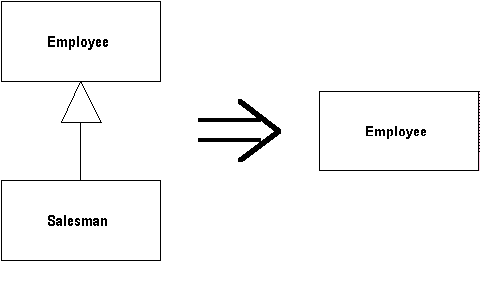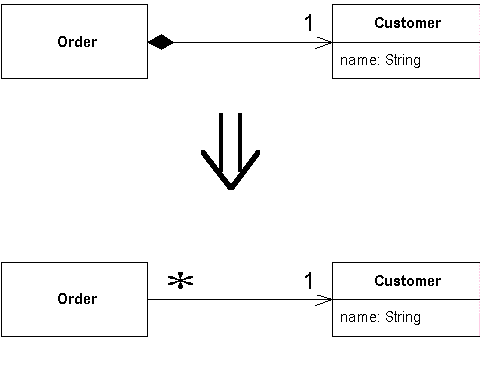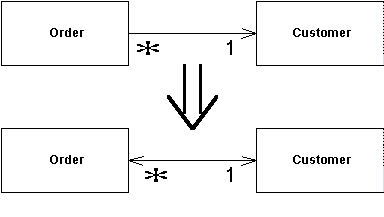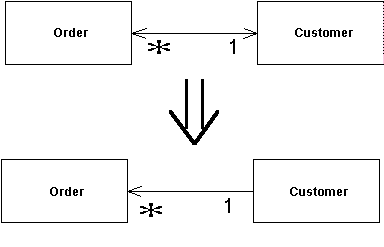Coauthor's note: Now that writing Java web applications has become a common way to create and deploy new web content, people around the globe are finding the Jakarta Tomcat servlet and JSP container useful. It's free, it's multiplatform, it's rich in features, it's rapidly evolving and improving, and it's never been more popular.
The only catch seems to be this: how can you configure Tomcat to do what you want it to do? Tomcat is capable, as long as you can configure it to suit your needs. Below is my list of ten Tomcat configuration tips, taken from Tomcat: The Definitive Guide, to help you do just that. -- Jason Brittain
1. Configuring the Admin Web Application
Most commercial J2EE servers provide a fully functional administrative interface, and many of these are accessible as web applications. The Tomcat Admin application is on its way to becoming a full-blown Tomcat administration tool rivaling these commercial offerings. First included in Tomcat 4.1, Admin already provides control over contexts, data sources, and users and groups. You can also control resources such as initialization parameters, as well as users, groups, and roles in a variety of user databases. The list of capabilities will be expanded upon in future releases, but the present implementation has proven itself to be quite useful.
Related Reading
Tomcat: The Definitive Guide
By Jason Brittain, Ian F. Darwin
Table of Contents
Index
Sample Chapter
Read Online--Safari Search this book on Safari:
Only This Book All of Safari
Code Fragments only
The Admin web application is defined in the auto-deployment file CATALINA_BASE/webapps/admin.xml.
You must edit this file to ensure that the path specified in the docBase attribute of the Context element is absolute; that is, the absolute path of CATALINA_HOME/server/webapps/admin. Alternatively, you could just remove the auto-deployment file and specify the Admin context manually in your server.xml file. On machines that will not be managed by this application, you should probably disable it altogether by simply removing CATALINA_BASE/webapps/admin.xml.
If you're using a UserDatabaseRealm (the default), you'll need to add a user and a role to the CATALINA_BASE/conf/tomcat-users.xml file. For now, just edit this file, and add a role named "admin" to your users database:
<role name="admin"/>
You must also have a user who is assigned to the "admin" role. Add a user line like this after the existing user entries (changing the password to something a bit more secure):
<user name="admin" password="deep_dark_secret" roles="admin"/>
Once you've performed these steps and restarted Tomcat, visit the URL http://localhost:8080/admin, and you should see a login screen. The Admin application is built using container-managed security and the Jakarta Struts framework. Once you have logged in as a user assigned to the admin role, you will be able to use the Admin application to configure Tomcat.
2. Configuring the Manager Web Application
The Manager web application lets you perform simple management tasks on your web applications through a more simplified web user interface than that of the Admin web app.
The Manager web application is defined in the auto-deployment file CATALINA_BASE/webapps/manager.xml.
You must edit this file to ensure that the path specified in the docBase attribute of the Context element is absolute; that is, the absolute path of CATALINA_HOME/server/webapps/manager.
If you're using the default UserDatabaseRealm, you'll need to add a user and role to the CATALINA_BASE/conf/tomcat-users.xml file. For now, just edit this file, and add a role named "manager" to your users database:
<role name="manager"/>
You must also have a user who is assigned the "manager" role. Add a user line like this after the existing user entries (changing the password to something a bit more secure):
<user name="manager" password="deep_dark_secret" roles="manager"/>
Then restart Tomcat and visit the URL http://localhost/manager/list to see the plain-text manager interface, or http://localhost/manager/html/list for the simple HTML manager interface. Either way, your Manager application should now be working.
The Manager application lets you install new web applications on a non-persistent basis, for testing. If we have a web application in /home/user/hello and want to test it by installing it under the URI /hello, we put "/hello" in the first text input field (for Path) and "file:/home/user/hello" in the second text input field (for Config URL).
The Manager also allows you to stop, reload, remove, or undeploy a web application. Stopping an application makes it unavailable until further notice, but of course it can then be restarted. Users attempting to access a stopped application will receive an error message, such as 503 - This application is not currently available.
Removing a web application removes it only from the running copy of Tomcat -- if it was started from the configuration files, it will reappear the next time you restart Tomcat (i.e., removal does not remove the web application's content from disk).
3. Deploying a Web Application
There are two ways of deploying a web application on the filesystem:
1. Copy your WAR file or your web application's directory (including all of its content) to the $CATALINA_BASE/webapps directory.
2. Create an XML fragment file with just the Context element for your web application, and place this XML file in $CATALINA_BASE/webapps. The web application itself can then be stored anywhere on your filesystem.
If you have a WAR file, you can deploy it by simply copying the WAR file into the directory CATALINA_BASE/webapps. The filename must end with an extension of ".war". Once Tomcat notices the file, it will (by default) unpack it into a subdirectory with the base name of the WAR file. It will then create a context in memory, just as though you had created one by editing Tomcat's server.xml file. However, any necessary defaults will be obtained from the DefaultContext element in Tomcat's server.xml file.
Another way to deploy a web app is by writing a Context XML fragment file and deploying it into the CATALINA_BASE/webapps directory. A context fragment is not a complete XML document, but just one Context element and any subelements that are appropriate for your web application. These files are like Context elements cut out of the server.xml file, hence the name "context fragment."
For example, if we wanted to deploy the WAR file MyWebApp.war along with a realm for accessing parts of that web application, we could use this fragment:
<!--
Context fragment for deploying MyWebApp.war
-->
<Context path="/demo" docBase="webapps/MyWebApp.war"
debug="0" privileged="true">
<Realm className="org.apache.catalina.realm.UserDatabaseRealm"
resourceName="UserDatabase"/>
</Context>
Put that in a file called "MyWebApp.xml," and copy it into your CATALINA_BASE/webapps directory.
These context fragments provide a convenient method of deploying web applications; you do not need to edit the server.xml file and, unless you have turned off the default liveDeploy feature, you don't have to restart Tomcat to install a new web application.
4. Configuring Virtual Hosts
The Host element normally needs modification only when you are setting up virtual hosts. Virtual hosting is a mechanism whereby one web server process can serve multiple domain names, giving each domain the appearance of having its own server. In fact, the majority of small business web sites are implemented as virtual hosts, due to the expense of connecting a computer directly to the Internet with sufficient bandwidth to provide reasonable response times and the stability of a permanent IP address.
Name-based virtual hosting is created on any web server by establishing an aliased IP address in the Domain Name Service (DNS) data and telling the web server to map all requests destined for the aliased address to a particular directory of web pages. Since this article is about Tomcat, we don't try to show all of the ways to set up DNS data on various operating systems. If you need help with this, please refer to DNS and Bind, by Paul Albitz and Cricket Liu (O'Reilly). For demonstration purposes, I'll use a static hosts file, since that's the easiest way to set up aliases for testing purposes.
To use virtual hosts in Tomcat, you just need to set up the DNS or hosts data for the host. For testing, making an IP alias for localhost is sufficient. You then need to add a few lines to the server.xml configuration file:
<Server port="8005" shutdown="SHUTDOWN" debug="0">
<Service name="Tomcat-Standalone">
<Connector className="org.apache.coyote.tomcat4.CoyoteConnector"
port="8080" minProcessors="5" maxProcessors="75"
enableLookups="true" redirectPort="8443"/>
<Connector className="org.apache.coyote.tomcat4.CoyoteConnector"
port="8443" minProcessors="5" maxProcessors="75"
acceptCount="10" debug="0" scheme="https" secure="true"/>
<Factory className="org.apache.coyote.tomcat4.CoyoteServerSocketFactory"
clientAuth="false" protocol="TLS" />
</Connector>
<Engine name="Standalone" defaultHost="localhost" debug="0">
<!-- This Host is the default Host -->
<Host name="localhost" debug="0" appBase="webapps"
unpackWARs="true" autoDeploy="true">
<Context path="" docBase="ROOT" debug="0"/>
<Context path="/orders" docBase="/home/ian/orders" debug="0"
reloadable="true" crossContext="true">
</Context>
</Host>
<!-- This Host is the first "Virtual Host": www.example.com -->
<Host name="www.example.com" appBase="/home/example/webapp">
<Context path="" docBase="."/>
</Host>
</Engine>
</Service>
</Server>
Tomcat's server.xml file, as distributed, contains only one virtual host, but it is easy to add support for additional virtual hosts. The simplified version of the server.xml file in the previous example shows in bold the overall additional structure needed to add one virtual host. Each Host element must have one or more Context elements within it; one of these must be the default Context for this host, which is specified by having its relative path set to the empty string (for example, path="").
5. Configuring Basic Authentication
Container-managed authentication methods control how a user's credentials are verified when a web app's protected resource is accessed. When a web application uses basic authentication (BASIC in the web.xml file's auth-method element), Tomcat uses HTTP basic authentication to ask the web browser for a username and password whenever the browser requests a resource of that protected web application. With this authentication method, all passwords are sent across the network in base64-encoded text.
Note: using basic authentication is generally considered insecure because it does not strongly encrypt passwords, unless the site also uses HTTPS or some other form of encryption between the client and the server (for instance, a virtual private network). Without this extra encryption, network monitors can intercept (and misuse) users' passwords. But, if you're just starting to use Tomcat, or if you just want to test container-managed security with your web app, basic authentication is easy to set up and test. Just add <security-constraint> and <login-config> elements to your web app's web.xml file, and add the appropriate <role> and <user> elements to your CATALINA_BASE/conf/tomcat-users.xml file, restart Tomcat, and Tomcat takes care of the rest.
The example below shows a web.xml excerpt from a club membership web site with a members-only subdirectory that is protected using basic authentication. Note that this effectively takes the place of the Apache web server's .htaccess files.
<!--
Define the Members-only area, by defining
a "Security Constraint" on this Application, and
mapping it to the subdirectory (URL) that we want
to restrict.
-->
<security-constraint>
<web-resource-collection>
<web-resource-name>
Entire Application
</web-resource-name>
<url-pattern>/members/*</url-pattern>
</web-resource-collection>
<auth-constraint>
<role-name>member</role-name>
</auth-constraint>
</security-constraint>
<!-- Define the Login Configuration for this Application -->
<login-config>
<auth-method>BASIC</auth-method>
<realm-name>My Club Members-only Area</realm-name>
</login-config>
6. Configuring Single Sign-On
Once you've set up your realm and method of authentication, you'll need to deal with the actual process of logging the user in. More often than not, logging into an application is a nuisance to an end user, and you will need to minimize the number of times they must authenticate. By default, each web application will ask the user to log in the first time the user requests a protected resource. This can seem like a hassle to your users if you run multiple web applications and each application asks the user to authenticate. Users cannot tell how many separate applications make up any single web site, so they won't know when they're making a request that crosses a context boundary, and will wonder why they're being repeatedly asked to log in.
The "single sign-on" feature of Tomcat 4 allows a user to authenticate only once to access all of the web applications loaded under a virtual host. To use this feature, you need only add a SingleSignOn Valve element at the host level. This looks like the following:
<Valve className="org.apache.catalina.authenticator.SingleSignOn"
debug="0"/>
The Tomcat distribution's default server.xml contains a commented-out single sign-on Valve configuration example that you can uncomment and use. Then, any user who is considered valid in a context within the configured virtual host will be considered valid in all other contexts for that same host.
There are several important restrictions for using the single sign-on valve:
The valve must be configured and nested within the same Host element that the web applications (represented by Context elements) are nested within.
The Realm that contains the shared user information must be configured either at the level of the same Host or in an outer nesting.
The Realm cannot be overridden at the Context level.
The web applications that use single sign-on must use one of Tomcat's built-in authenticators (in the <auth-method> element of web.xml), rather than a custom authenticator. The built-in methods are basic, digest, form, and client-cert authentication.
If you're using single sign-on and wish to integrate another third-party web application into your web site, and the new web application uses only its own authentication code that doesn't use container-managed security, you're basically stuck. Your users will have to log in once for all of the web applications that use single sign-on, and then once again if they make a request to the new third-party web application. Of course, if you get the source and you're a developer, you could fix it, but that's probably not so easy to do.
The single sign-on valve requires the use of HTTP cookies.
7. Configuring Customized User Directories
Some sites like to allow individual users to publish a directory of web pages on the server. For example, a university department might want to give each student a public area, or an ISP might make some web space available on one of its servers to customers that don't have a virtually hosted web server. In such cases, it is typical to use the tilde character (~) plus the user's name as the virtual path of that user's web site:
http://www.cs.myuniversity.edu/~username
http://members.mybigisp.com/~username
Tomcat gives you two ways to map this on a per-host basis, using a couple of special Listener elements. The Listener's className attribute should be org.apache.catalina.startup.UserConfig, with the userClass attribute specifying one of several mapping classes. If your system runs Unix, has a standard /etc/passwd file that is readable by the account running Tomcat, and that file specifies users' home directories, use the PasswdUserDatabase mapping class:
<Listener className="org.apache.catalina.startup.UserConfig"
directoryName="public_html"
userClass="org.apache.catalina.startup.PasswdUserDatabase"/>
Web files would need to be in directories such as /home/users/ian/public_html or /users/jbrittain/public_html. Of course, you can change public_html to be whatever subdirectory into which your users put their personal web pages.
In fact, the directories don't have to be inside of a user's home directory at all. If you don't have a password file but want to map from a user name to a subdirectory of a common parent directory such as /home, use the HomesUserDatabase class:
<Listener className="org.apache.catalina.startup.UserConfig"
directoryName="public_html" homeBase="/home"
userClass="org.apache.catalina.startup.HomesUserDatabase"/>
In this case, web files would be in directories such as /home/ian/public_html or /home/jasonb/public_html. This format is more useful on Windows, where you'd likely use a directory such as C:home.
These Listener elements, if present, must be inside of a Host element, but not inside of a Context element, as they apply to the Host itself.
8. Using CGI Scripts with Tomcat
Tomcat is primarily meant to be a servlet/JSP container, but it has many capabilities rivalling a traditional web server. One of these is support for the Common Gateway Interface (CGI), which provides a means for running an external program in response to a browser request, typically to process a web-based form. CGI is called "common" because it can invoke programs in almost any programming or scripting language: Perl, Python, awk, Unix shell scripting, and even Java are all supported options. However, you probably wouldn't run a Java application as a CGI due to the start-up overhead; elimination of this overhead was what led to the original design of the servlet specification. Servlets are almost always more efficient than CGIs because you're not starting up a new operating-system-level process every time somebody clicks on a link or button.
Tomcat includes an optional CGI servlet that allows you to run legacy CGI scripts; the assumption is that most new back-end processing will be done by user-defined servlets and JSPs.
To enable Tomcat's CGI servlet, you must do the following:
Rename the file servlets-cgi.renametojar (found in CATALINA_HOME/server/lib/) to servlets-cgi.jar, so that the servlet that processes CGI scripts will be on Tomcat's CLASSPATH.
In Tomcat's CATALINA_BASE/conf/web.xml file, uncomment the definition of the servlet named cgi (this is around line 241 in the distribution).
Also in Tomcat's web.xml, uncomment the servlet mapping for the cgi servlet (around line 299 in the distributed file). Remember, this specifies the HTML links to the CGI script.
Either place the CGI scripts under the WEB-INF/cgi directory (remember that WEB-INF is a safe place to hide things that you don't want the user to be able to view, for security reasons), or place them in some other directory within your context and adjust the cgiPathPrefix initialization parameter of the CGIServlet to identify the directory containing the files. This specifies the actual location of the CGI scripts, which typically will not be the same as the URL in the previous step.
Restart Tomcat, and your CGI processing should now be operational.
The default directory for the servlet to locate the actual scripts is WEB-INF/cgi. As has been noted, the WEB-INF directory is protected against casual snooping from browsers, so this is a good place to put CGI scripts, which may contain passwords or other sensitive information. For compatibility with other servers, though, you may prefer to keep the scripts in the traditional directory, /cgi-bin, but be aware that files in this directory may be viewable by the curious web surfer. Also, on Unix, be sure that the CGI script files are executable by the user under which you are running Tomcat.
9. Changing Tomcat's JSP Compiler
In Tomcat 4.1 (and above, presumably), compilation of JSPs is performed by using the Ant program controller directly from within Tomcat. This sounds a bit strange, but it's part of what Ant was intended for; there is a documented API that lets developers use Ant without starting up a new JVM. This is one advantage of having Ant written in Java. Plus, it means you can now use any compiler supported by the javac task within Ant; these are listed in the javac page of the Apache Ant manual. It is easy to use because you need only an <init-param> with a name of "compiler" and a value of one of the supported compiler names:
<servlet>
<servlet-name>jsp</servlet-name>
<servlet-class>
org.apache.jasper.servlet.JspServlet
</servlet-class>
<init-param>
<param-name>logVerbosityLevel</param-name>
<param-value>WARNING</param-value>
</init-param>
<init-param>
<param-name>compiler</param-name>
<param-value>jikes</param-value>
</init-param>
<load-on-startup>3</load-on-startup>
</servlet>
Of course, the given compiler must be installed on your system, and the CLASSPATH may need to be set, depending on which compiler you choose.
10. Restricting Access to Specific Hosts
Sometimes you'll only want to restrict access to Tomcat's web app to only specified host names or IP addresses. This way, only clients at those specified sites will be served content. Tomcat comes with two Valves that you can configure and use for this purpose: RemoteHostValve and RemoteAddrValve.
These Valves allow you to filter requests by host name or by IP address, and to allow or deny hosts that match, similar to the per-directory Allow/Deny directives in Apache httpd. If you run the Admin application, you might want to only allow access to it from localhost, as follows:
<Context path="/path/to/secret_files" ...>
<Valve className="org.apache.catalina.valves.RemoteAddrValve"
allow="127.0.0.1" deny=""/>
</Context>
If no allow pattern is given, then patterns that match the deny attribute patterns will be rejected, and all others will be allowed. Similarly, if no deny pattern is given, patterns that match the allow attribute will be allowed, and all others will be denied.
***** 아름다운프로님에 의해서 게시물 복사 + 카테고리변경되었습니다 (2003-12-18 17:36)











